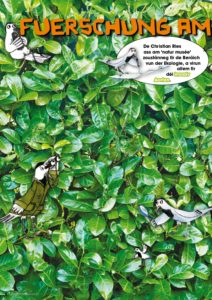Presentation slides in PDF format
Invasive alien species of Luxembourg and EU concern
- EU Regulation 1143/2014 on IAS – Nora Elvinger, MDDI [915 KB]
- Terrestrial neozoa – Sandra Cellina, ANF [2 MB]
- Aquatic neozoa – Carole Molitor, AGE [4.2 MB]
- Neophytes – Christian Ries, MNHNL [PDF 3.8 MB]
- Action plans – Tiago de Sousa, ANF [PDF 2 MB]
European regulation and challenges for Luxembourg
In order to combat invasive alien species with a significant impact on biodiversity, public health or the economy, a European regulation (No. 1143/2014) defines a whole range of measures and obligations. Member States must therefore, among other things, set up a monitoring system, provide for management measures or even eradication, and impose restrictions on the keeping and marketing of these species.
The conference aims to give an overview of the obligations arising from these regulations and to present the targeted species with a particular focus on those already present in Luxembourg. Finally, the widely used species’ action plans currently under development will be presented.
Within the framework of setting up a surveillance system in Luxembourg, the contribution of field workers is a key element. The conference is also intended to motivate naturalists and other interested parties to share their observations.
Detailed program
- The European Regulation on the prevention and management of the introduction and spread of invasive alien species – Nora Elvinger (MDDI)
- Species covered by European regulations – Sandra Cellina (ANF), Carole Molitor (AGE), Christian Ries (MNHNL)
- Action Plans for the Management of Widely Spread Alien Species – Tiago de Sousa (ANF)
Organisation: Ministry of Sustainable Development and Infrastructure – Environment Department (MDDI), Nature and Forestry Administration (ANF), Water Management Administration (AGE), National Museum of Natural History (MNHNL), The Luxembourg Naturalist Society (SNL), Association of Luxembourg Biologists (ABIOL).
Registration
Registration requested by email at
→ Invitation [French, PDF 294 KB]
Page content last updated on 2019-11-12. Last proofread by Caroline Grounds on 2019-11-12.


 Communicated on July 13th 2017 by the IAS team of DG ENV, European Commission
Communicated on July 13th 2017 by the IAS team of DG ENV, European Commission
